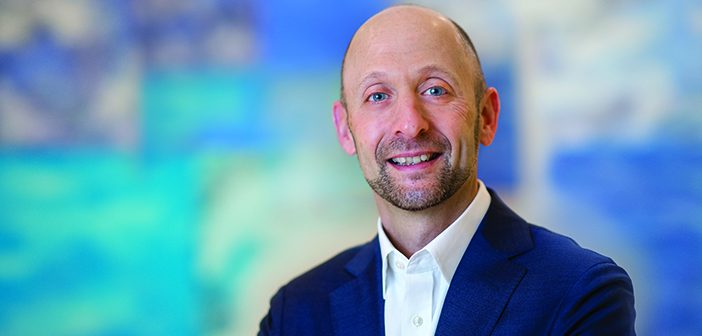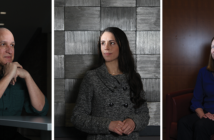Patient behavior change is the key to successful outcomes.
Psychologist Mark Aloia, PhD RES’95 F’96, an associate professor of medicine at National Jewish Health in Denver, is one of a relatively small number of board-certified clinicians working in behavioral sleep medicine. Foremost a clinical researcher, Aloia has one foot in industry, where he has an unusual title: vice president and global lead, behavior change, for the medtech giant Philips.
Aloia credits a rotation in sleep medicine while at Brown with igniting his interest in obstructive sleep apnea (OSA), specifically the problem of poor adherence to the disorder’s primary treatment, CPAP (continuous positive airway pressure) therapy. Adherence to CPAP has historically been in the range of 50 to 60 percent. Aloia developed a “motivational enhancement” methodology, based on principles of motivational interviewing, and demonstrated in clinical trials that this approach boosted adherence.
His success prompted Philips Respironics, which manufactures CPAP devices, to recruit him as a clinical researcher in 2007. Aloia was on board to help the company solve this adherence problem just as it became a business problem: in 2013 Medicare began denying payment for CPAP if patients don’t meet adherence criteria. Aloia helped develop an app, DreamMapper, for Philips, and a recent study of 172,000 patients found that 78 percent of people who used the app were adherent by Medicare’s definition. Aloia notes that the app has 600,000 users; “the 22 percent improvement in adherence represents 120,000 patients who would have lost their devices,” he says.
While Aloia sees himself as a clinical researcher first, with his industry role he’s at the heart of a movement to put technology in the hands of patients to help them achieve their health goals. Too often, these fail to do the job. Lacking a basis in health psychology, apps generally use patient-sourced data to inform and educate them rather than motivating them to change. This doesn’t work for sleep apnea, he says—nor does it work in most other conditions requiring behavior change. Clinicians might make OSA patients aware that, if left untreated, their disease might lead to high blood pressure and heart failure, yet patients still don’t comply. “We, as clinicians, have often thought that if only the patients knew what we know, they would change their behavior,” Aloia says. “That doesn’t work. Even many physicians don’t adhere with their therapies.”
Aloia has codified behavioral psychology tenets into five pillars that can be described by the acronym “PAUSE” (“because software engineers asked me to fit everything that I have learned about behavior change onto one slide,” he jokes). That stands for Personalization, the need for an intervention to have personal relevance; Autonomy, meaning the patients are in control of their own choices; Urgency, the reason why the patient should change the behavior (daytime sleepiness impacting job performance, for example); Social support; and Empowerment, which comes from setting patient-specific, achievable targets along the way to major goals. “A target might be a 10 percent improvement. Reaching that … builds momentum and confidence,” he says.
This methodology might apply equally well to parenting, says Aloia, who has two boys, ages 10 and 13. But, he admits, “I don’t always practice what I preach!”




